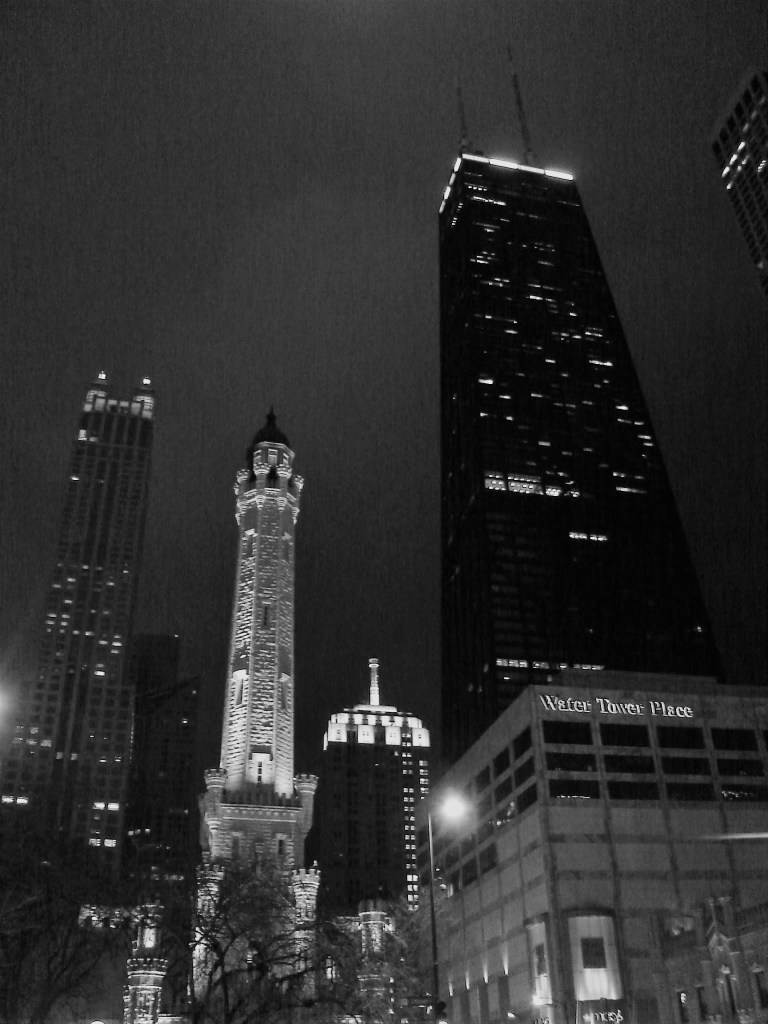Water Tower Place on North Michigan Avenue has fallen on hard times, as have many malls, and plans are underway to revive the property with new uses:

In consultant-speak, today’s juice is “experiential” retail. It means that people not only want something they haven’t seen before, but they want an experience to go along with their purchase. The Apple Store and the Starbucks Reserve Roastery further south on Michigan Avenue are examples of that — places where shoppers come to see and feel as well as to buy. A pop-up show called the “Dr. Seuss Experience” filled Macy’s former space in Water Tower Place this winter. Down the street, a “Museum of Ice Cream” is opening at the base of the newly renovated Tribune Tower this summer…
But she and her colleagues are already thinking big. A report titled “North Michigan Avenue: Strategies for a Vibrant Future” issued in March by a group of business and city leaders envisions a grand promenade running from the historic limestone Water Tower, past the Museum of Contemporary Art, to the lake along Chicago Avenue; and a soaring pedestrian bridge stretching from Michigan Avenue, over DuSable Lake Shore Drive, to Oak Street Beach. The bridge, modeled on a structure in Moscow, would make it possible to see and get to Lake Michigan from the Mag Mile without descending into dank tunnels under the beachfront drive.
Also in the report: a more run-of-the-mill property tax on landlords raising about three quarters of a million dollars passed the City Council this year; it will be used for cultural events like “Music on the Mile” and for security cameras. The city also awarded Bares’ group money from a federal grant to deploy a team of uniformed “ambassadors” — unarmed security personnel with radios to help tourists, assist the homeless and report criminal activity on the Mag Mile — starting in June.
But most of the report is focused on getting people excited about going downtown to enjoy attractions such as music, art and culture, and Water Tower Place recently scored its own big get on that front. In April, the world-renowned Hubbard Street Dance Chicago surprised everyone and moved from a temporary home on the North Side into the mall’s fourth floor.
For years, shopping in a lively context was enough “juice” to bring in both serious shoppers, curious shoppers, and other visitors. Shopping was one of the most popular activities for Americans and the glamor of a downtown mall plus at least a decent-sized crowd would make it feel exciting.
Now that shopping is decoupled from physical space, these former shopping spaces do not have enough “juice.” They need more experiences, ranging from music to arts to unusual sights to places where people can post intriguing social media images.
Can cities and communities be flexible enough to shift spaces and experiences? And how many experiential areas can there be? On the first question, communities need to open to how spaces might be used in different ways when conditions change. Shopping malls may have worked for decades and brought in significant revenue, but when they struggle, what is next? For the second question, Chicago already has some of these experiential spaces: Navy Pier, the Museum Campus, a Riverwalk, and other concentrations of interesting activity. Can these work together in that a visitor could access several of these in a single day or trip or at some point do they start competing against each other?
The decline of in-person shopping is a big deal and a shift that many communities are struggling to address. Those who find successful alternative uses for these shopping spaces and also develop a mindset of needing to refresh certain places may just come out ahead.
